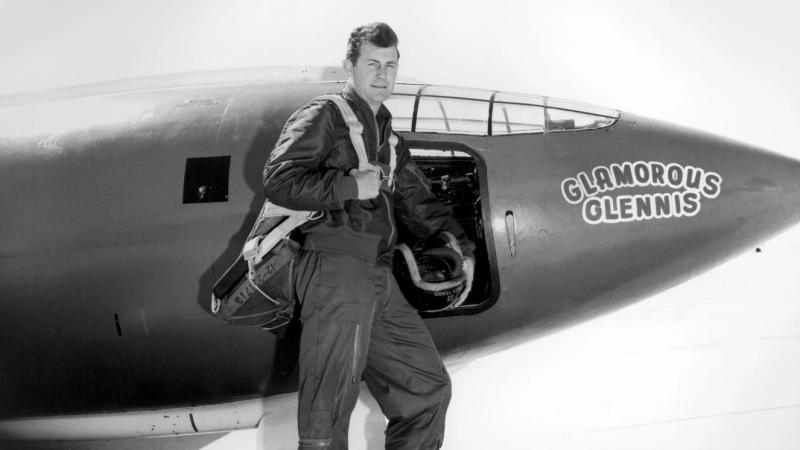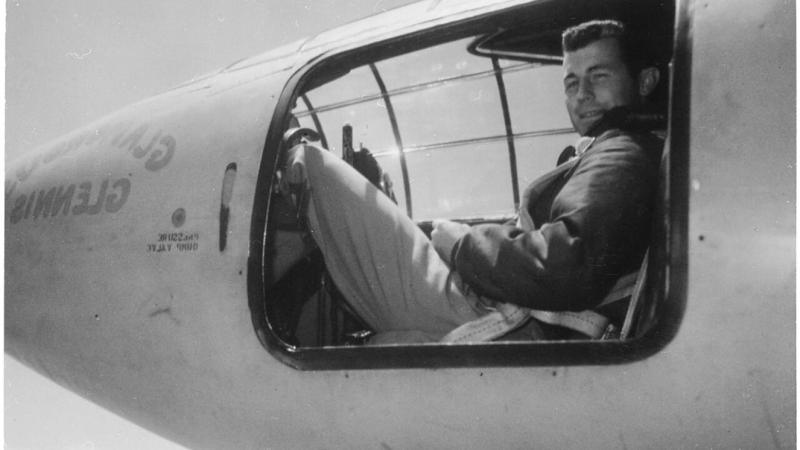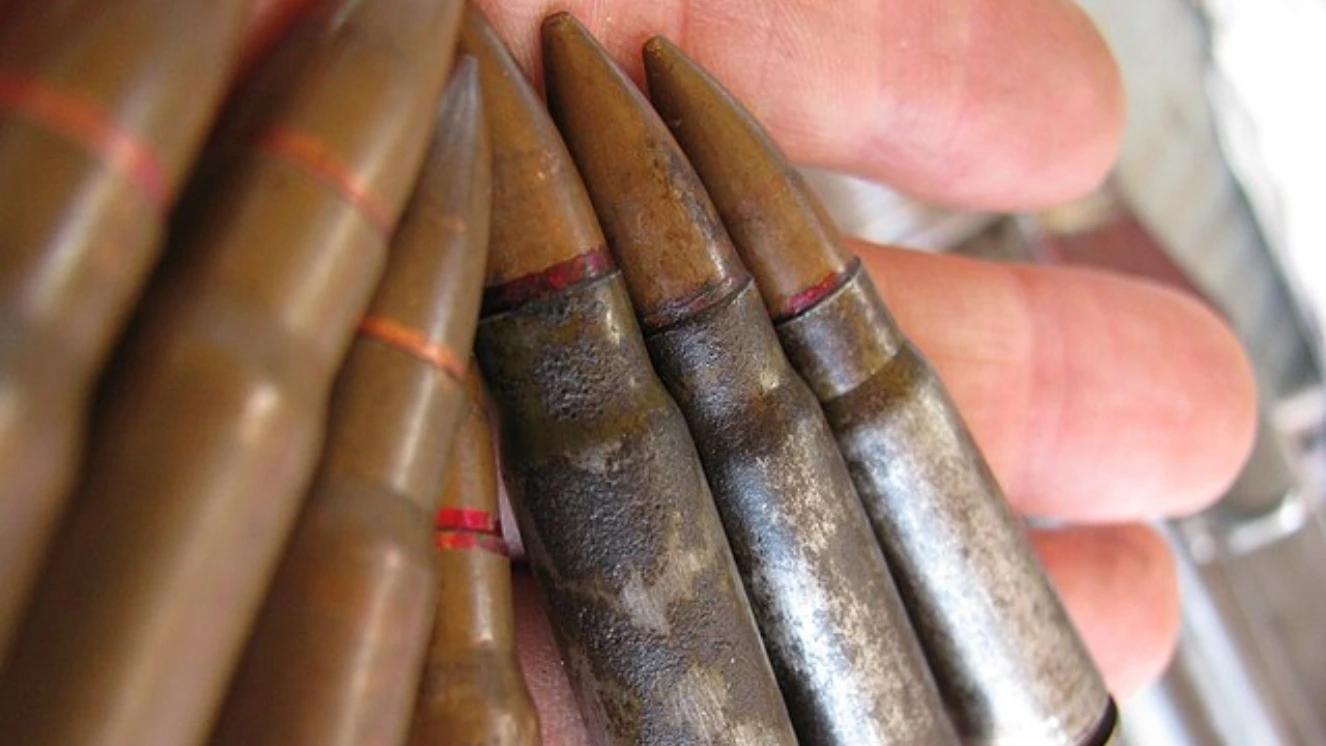BREAKING THE SOUND BARRIER: CHUCK YEAGER’S HISTORIC MISSION

On the morning of October 14, 1947, test pilot Chuck Yeager made up his mind to carry out a flight that would change history—despite being in less-than-ideal shape. Just two days earlier, he had injured himself, leaving him with two broken ribs and limited use of one arm. Still, determined to push the limits of flight, Yeager climbed aboard a modified B-29 Superfortress carrying a bright orange experimental jet—the Bell X-1—nestled in its bomb bay. As the bomber climbed to 25,000 feet, Yeager prepared to transfer into the rocket-powered aircraft.
Once the B-29 reached the target altitude, the orange X-1 was released, dropping nose-first to gain speed before Yeager ignited its powerful engines. The plane streaked across the clear Mojave Desert sky like a bullet. Moments later, the airspeed indicator hit its limit and surged past. At 10:23 a.m. local time, Yeager and his aircraft reached 700 miles per hour—Mach 1.06—officially surpassing the speed of sound. In that instant, United States Air Force Major Charles “Chuck” Yeager became the first person to break the sound barrier, cementing his place in aviation history.
Who Was Chuck Yeager?
Born in the town of Myra, West Virginia, in the foothills of the Appalachian Mountains on February 13th, 1923, Chuck Yeager displayed an early affinity for machinery and engineering. As a young man, the various machines his father utilized and maintained as part of the drilling business he operated fascinated him.
As such, he strove to learn all he could about how they worked. And a few months after graduating high school in 1941, he joined the US Army Air Corps (which soon became the US Army Air Forces). A few months after that, the Japanese bombed the US Naval Base at Pearl Harbor, Hawaii, and Chuck, along with the rest of the American military, found himself at war.

After several years of training on various airframes, Yeager finally joined the fray in 1943. As a fighter pilot of the Eighth Air Force, he flew 64 combat missions between then and the war’s end. He racked up 12 solo aerial victories, making him an ace twice over.
Shot down over occupied France in March of 1944, he evaded capture, made it back to England with the help of the French Resistance, and kept on flying. All at the controls of several P-51 Mustangs, each of which he named “Glamorous Glen” after his then-fiancée, Glennis Dickhouse.
After the war’s end, Yeager remained in the USAAF, eventually becoming a test pilot in early 1946. And on September 26th, 1947, Yeager and every other member of the Army Air Forces transferred from their former service branch to the newest one in America’s military: the United States Air Force.
Breaking the Sound Barrier: Yeager and the Bell X-1
In 1947, then-Major Yeager was part of a cohort of test pilots stationed at Edwards Air Force Base (then still called Muroc Army Airfield) in California. His assignment was to fly the experimental Bell X-1 jet as part of a secret project with the express purpose of successfully breaking the sound barrier.
With thin wings, a bullet-shaped fuselage, and full-on rocket engines, the aircraft was designed for speed and speed alone. Instead of taking off from a runway on its own, a modified bomber would take off with the X-1 in its bomb bay and drop it once airborne. Its fuselage was bright orange aside from two words painted on its nose: “Glamorous Glennis.” Yeager named the plane after the very same woman as all his WWII fighters, who was by then Glennis Yeager.
Yeager’s first three times at the controls of the X-1 were during so-called glide flights: after dropping from the B-29 at altitude, he’d simply glide it to a landing. Only after he’d gotten used to the controls did he start carrying out powered flights.

By October 10th, he’d done it eight times, reaching Mach 0.96 on his most recent flight. His ninth was scheduled for the 14th with the planned goal of hitting 0.98. But on the 12th, after having dinner with his wife, the two decided to go horseback riding, an activity which soon turned into a race back to the barn they started from. Unaware that the gate leading to said barn was closed, Chuck ran his horse straight into it and went flying. He hit the ground hard, breaking two ribs.
Knowing his injury would likely get him bumped from his next planned flight, he avoided going to the base for medical care and instead went to a local veterinarian the next day. The vet taped Yeager up and advised him that he “don't do nothin' strenuous." He then went to his close friend and the flight engineer for the X-1 project, Captain Jack Ridley, to explain what happened and that, with his injuries, he wouldn’t be able to properly close the hatch of the jet.
As a workaround, Ridley sawed off part of a wooden broom handle for Yeager to use as a lever to operate the handle sealing the hatch. After testing it on the ground to make sure it would do, Yeager was as ready as a man with two broken ribs could be to try and fly faster than any person alive.
Sound Barrier Broken
On October 14th, the injured Yeager boarded the Glamorous Glennis, successfully sealed the hatch (via broom handle), and, once the B-29 released him, shot off across the desert sky. The machmeter ticked upwards as the jet flew faster and faster until the needle shot completely off the scale.
Observers on the ground heard a sound like distant thunder echoing across the Mojave Desert, a so-called “sonic boom,” the noise created by an object outpacing sound itself. Yeager called over the radio, “This machmeter is all screwy" as if he didn’t know what had happened. But he did.
In fact, the phrase was one he prearranged with Ridley to let him know he’d broken the sound barrier without directly saying so (the program was so secret they didn’t dare note the moment in plain English over the radio).
Fourteen minutes after dropping from the B-29’s bomb bay, Yeager and the Glamorous Glennis glided safely to a stop on the hard-packed sand of Rogers Dry Lake. Humankind had beaten sound itself.
Chuck Yeager’s Later Career and Life
When the Air Force declassified the fact that they’d broken the sound barrier, Yeager was doing the same job he’d done since 1946 and would do until 1954: flying experimental aircraft at Edwards.
In the fall of 1953, he was one of two American pilots assigned to test out a MiG-15 fighter given to the US by a defector from North Korea. And he set yet another record in December of that year by flying an X-1A at Mach 2.44, becoming the fastest man alive for the second time. The following year, he returned to the fighter community, taking command of the 417th Fighter Bomber Squadron. For the next seven years, he served in a variety of command and other senior roles in the Air Force, including a late 1960s stint as the commander of the 405th Fighter Wing, during which he flew 127 missions in the skies over Vietnam. He retired from the Air Force with the rank of brigadier general in 1975.
In 1979, the publication of Tom Wolfe’s hit book on test pilots and the dawn of the Space Race, The Right Stuff, made Yeager something of a household name. And the Academy Award-winning 1983 movie of the same name, based on that book (both of which are, in this writer’s opinion, excellent), wherein the late, great actor and playwright Sam Shepard received a nomination for Best Supporting Actor for playing Yeager, further increased his reputation.
Over the next few decades, he remained a public figure, published an autobiography, and gave frequent lectures and public speeches. He remained married to the original Glamorous Glennis until her death in 1990 and had four children with her. He remarried in 2003 at the age of 80 and lived to the ripe old age of 97 on December 7th, 2020.
As for the orange-skinned Glamorous Glennis that went Mach 1.06 that October morning, you can still see her today, on display hanging from the ceiling of the Milestones of Flight Hall of the National Air and Space Museum in Washington, D.C.
Suggested reads:
BY PAUL MOONEY
Military Affairs Correspondent
Paul D. Mooney is an award winning writer and filmmaker with degrees from Boston University, Sarah Lawrence College, and Stony Brook University. In addition to writing and editing for Military Brands, he works as a science communications specialist as well as a part-time creative consultant for the...



